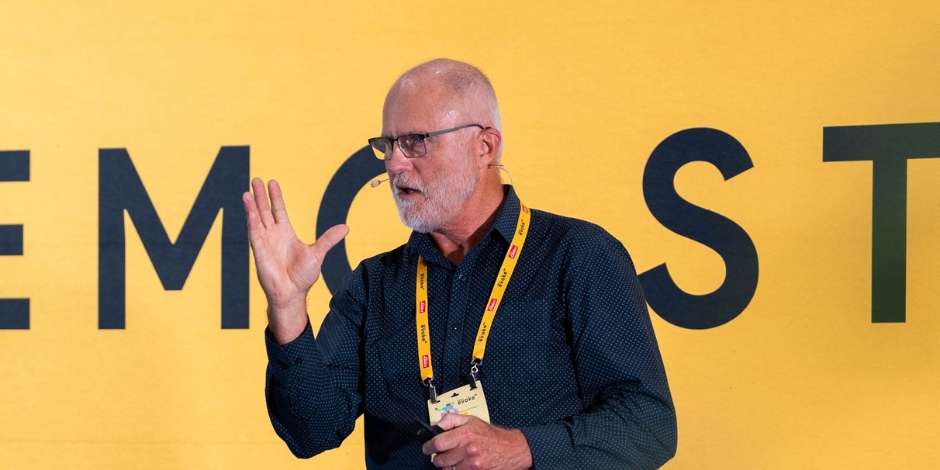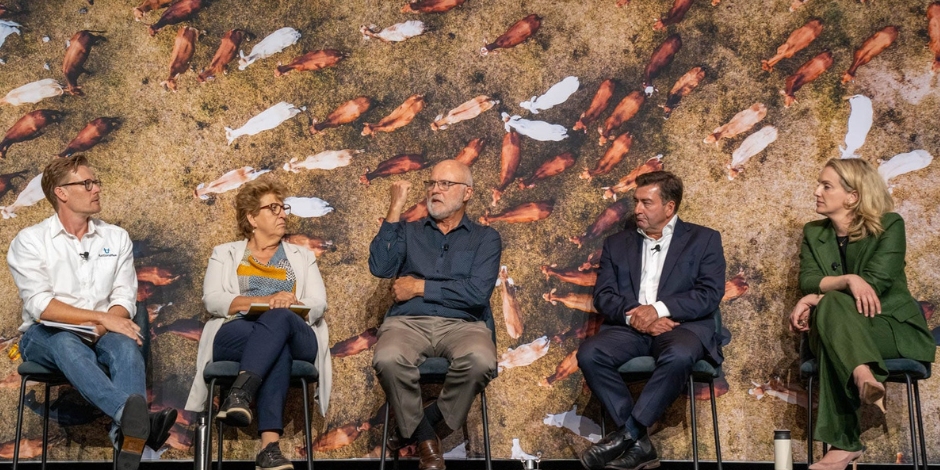In the rush to sell carbon credits, bear in mind – there are no surplus offsets in agriculture
Six years out from the deadline, we’re already seeing glimpses of how supply chains plan to meet their 2030 carbon pledges. In short: farmers with the lowest carbon footprint will be prioritised, so how do you ensure you’re at the head of the queue? Professor Richard Eckard shares why he believes selling carbon credits isn’t the answer.

I’ve long been critical of Australia’s soil carbon method – which awards credits for an increase in organic matter arising either from farm management, or simply the fortune of a wetter season. Are we truly mitigating climate change, or just shifting deck chairs on the Titanic?
But this isn’t the place for that argument.
Here, I want to dig into our predictions for the supply chain’s buying practices post-2030 – and how producers can get themselves to the top of queue.
Carbon fatigue is a real issue in agriculture. Wall to wall media coverage about how to capture it, avoid it, and monetise it has most (if not all) farmers grappling with what to do. It’s a far cry from when I developed the first carbon calculators for ag back in 2006, when no– one much cared about their carbon balance – let alone how it was calculated.
RELATED: Five truths we need to spur Australia’s agrifood producers into faster action on carbon

Richard Eckard is Professor of Sustainable Agriculture at the University of Melbourne and Director of the Primary Industries Climate Challenges Centre.
But save for a handful of early sales of credits – Australian Carbon Credit Units (ACCUs) – carbon is still largely theoretical to most commodity producers: a global agenda, government commitment, or industry target that hasn’t yet induced (or forced) a rethink on the way we farm.
That’s about to change.
Six years out from 2030 (when most global and domestic supply chain carbon pledges fall due) it’s becoming apparent that these companies won’t come within cooee unless they lean on their suppliers.
International examples give early insights into supply chain purchasing
Having gambled shareholder support, reputation, and market share on their ability to meet these targets, the big end of town doesn’t want to fail. And the early movers are providing some insights into how they’ll use the market to sort the low emitters from the high.
Some – like dairy giant, Fonterra – are already conducting carbon audits on all their suppliers; others are asking producers to keep records in preparation for the day the auditors arrive.
From there, it’ll be a matter of simple mathematics. Say you’re a dairy producer at the higher end of that industry’s emission intensity range (carbon footprint), choosing your product means the buyer must also purchase offsets to stay on target. Your product will be immediately less attractive than a low carbon version.
Knowing, then lowering, your number
The first step in positioning yourself for a post-2030 market is to know your emissions intensity (or, at the very least, understand the data you’ll need to calculate your number when asked.) I’ve worked with Agricultural Innovation Australia (AIA) on a pre-competitive engine that simplifies the process for producers, providing definitive calculations of on-farm greenhouse gases (GHG) at the commodity, farm, and whole-of-business level.
Produce several commodities? AIA’s Environmental Accounting Platform does it all in one place, providing data files you can plug in to your analytics software of choice; or share with your supply chain, consultants, or financiers. Try the beta version here.
Knowing your number is a good start for engaging in a low carbon marketplace. But come 2030, knowing how to lower it will matter more.
And there’s a couple of reassuring things to keep in mind:
- No-one is asking us to be carbon neutral tomorrow. Net Zero is a journey, and by 2030, most supply chain partners just need us to have gotten to a 30% reduction.
- Emissions correlate with efficiency. Cotton and grain growers who use nitrogen fertiliser most efficiently have the lowest emissions intensity. Livestock properties with the highest growth and weaning rates and lowest mortality have the lowest emissions intensity.
So, while research into cost-effective low carbon or decarbonising practices will be important, efficiency-driven best practice is still one of the best ways of reducing your carbon footprint right now.
RELATED: Australia’s farmers want more climate action – and they’re starting in their own (huge) backyards
The controversial crossroads: cash in on credits, or inset as insurance?
I like to think of carbon credit like a share certificate: not worth anything until you monetise it. With carbon credits, their value lies in how we can use it reduce a GHG balance. And in Australia, producers can do that in two ways:
- Offsetting: sell it to reduce the GHG balance of other enterprises (like a mining company, for example) through the Australian Carbon Crediting Scheme, or
- Insetting: retain it to reduce your farm’s own GHG balance. Insetting does not need ACCUs, just an accredited audit. There’s no need to go through all that paperwork and expense if you plan to just inset.
I’ve said before that’s it’s regrettable Australia put a price on tree and soil carbon, because it’s fostered an unhealthy reliance on offsets. Why, when trading credits is providing a welcome cash injection into farm budgets?
My first concern is that it’ll drive the greatest land use change we’ll see post the initial settlement clearing, as farms go out of food production and into trees to meet the offset needs of big emitters. Selling your credits to miners and the like means the buyer gets the benefit of not having had to change their emitting behaviours, while the producer, takes all the management burden.
RELATED: Occasional Paper: A landholders guide to participate in soil carbon farming in Australia
My second concern is that the reliance on offsets limits producer ability to insure their own business in a post-2030 market.
One of the key things glossed over in discussions about carbon credits is that you can’t double dip: you can’t sell your carbon credits and still claim to be a low carbon producer. And what happens when the supply chain demands evidence that you are?

Richard Eckard (centre) at evokeAG. 2024.
It’s at that point that the producers who held on to their credits – and can inset them to lower their own farm carbon balance – will jump to the top of the supplier queue. Whether those purchasing decisions will manifest as a premium or penalty remains to be seen. But it’s that uncertainty which we should be insuring against.
It’s time to be greedy
All the hype around offsets has created a troubling assumption that the ag sector has an abundance of surplus carbon to sell.
Working alongside the University of Melbourne, The University of Queensland and Princeton University in the USA, I’ve been leading the development of the Agriculture and Land Sector part of the federal government’s Net Zero Australia Plan. And what we’ve learned directly challenges the surplus carbon myth.
Even if we inset ALL tree and soil carbon on Australian farms, as a sector, we’ll struggle to reach Net Zero. In other words, there are no surplus offsets in agriculture!
It’s time to be greedy, insetting every last one against farm balances to ensure that when post-2030 buyers come looking for low carbon products, we are at the top of the list.
Richard Eckard is Professor of Sustainable Agriculture at the University of Melbourne and Director of the Primary Industries Climate Challenges Centre. He delivered keynote presentation, ‘Quantifying your emissions’ at evokeAG. 2024.
You can also tap into more articles about the technology advancing agrifood supply chains, along with updates ahead of evokeAG. 2025 in Brisbane, Queensland. Subscribe to our monthly newsletter here.
